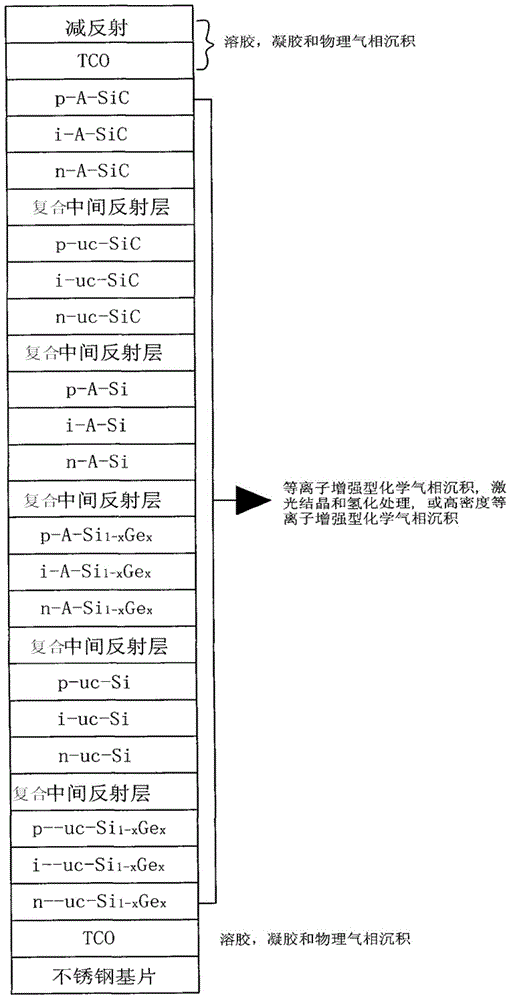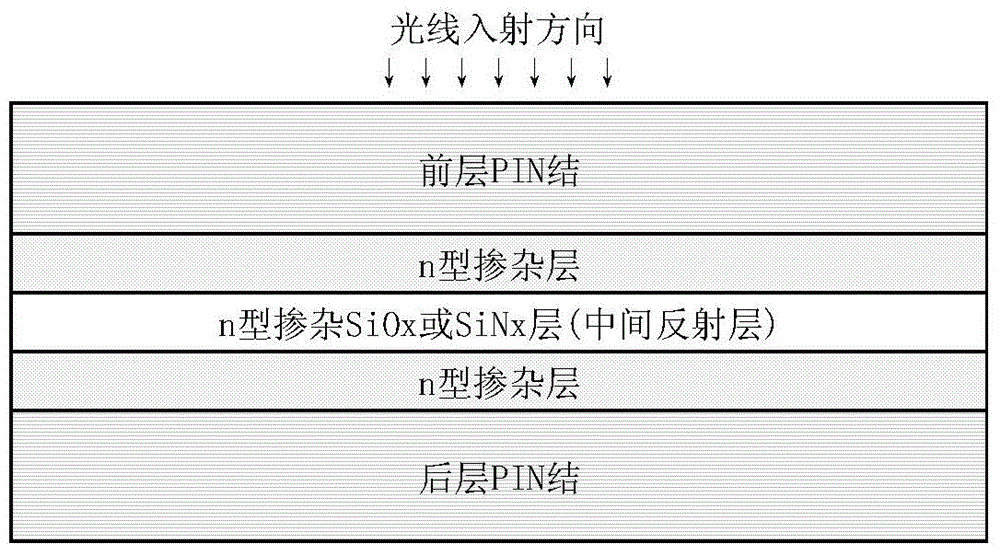Composite intermediate reflective layer for battery and multi-junction multi-stacked silicon-based thin film battery
A technology of silicon-based thin film and reflective layer, which is applied in the fields of circuits, photovoltaic power generation, electrical components, etc., can solve the problems that have not been well solved, and no one has proposed a new composite structure of the middle reflective layer, open circuit voltage loss, etc.
- Summary
- Abstract
- Description
- Claims
- Application Information
AI Technical Summary
Problems solved by technology
Method used
Image
Examples
Embodiment Construction
[0046] Below in conjunction with embodiment the present invention will be further described.
[0047] In the actual case of amorphous silicon / microcrystalline silicon double-junction laminated cells, high-efficiency silicon-based thin-film solar cells are prepared by applying the design structure of the composite intermediate reflective layer of the present invention, wherein two-layer and three-layer intermediate reflective layer structures are designed respectively , refer to attached Figure 4 , 5 :
[0048] (1) 2-layer intermediate reflective layer composite structure: glass substrate / TCO front electrode / p-A-Si / i-A-
[0049] Si / n-A-Si / n-μc-Si / intermediate reflection layer / n-μc-Si / intermediate reflection layer / n-μc-Si / p-μc-Si / i-μc-Si:H / n-μc- Si / TCO back electrode / encapsulation material (and back reflection layer) / glass backplane;
[0050] (2) 3-layer intermediate reflective layer composite structure: glass substrate / TCO front electrode / p-A-Si / i-A-Si / n-A-Si / n-μc-Si / inter...
PUM
 Login to View More
Login to View More Abstract
Description
Claims
Application Information
 Login to View More
Login to View More - R&D
- Intellectual Property
- Life Sciences
- Materials
- Tech Scout
- Unparalleled Data Quality
- Higher Quality Content
- 60% Fewer Hallucinations
Browse by: Latest US Patents, China's latest patents, Technical Efficacy Thesaurus, Application Domain, Technology Topic, Popular Technical Reports.
© 2025 PatSnap. All rights reserved.Legal|Privacy policy|Modern Slavery Act Transparency Statement|Sitemap|About US| Contact US: help@patsnap.com



